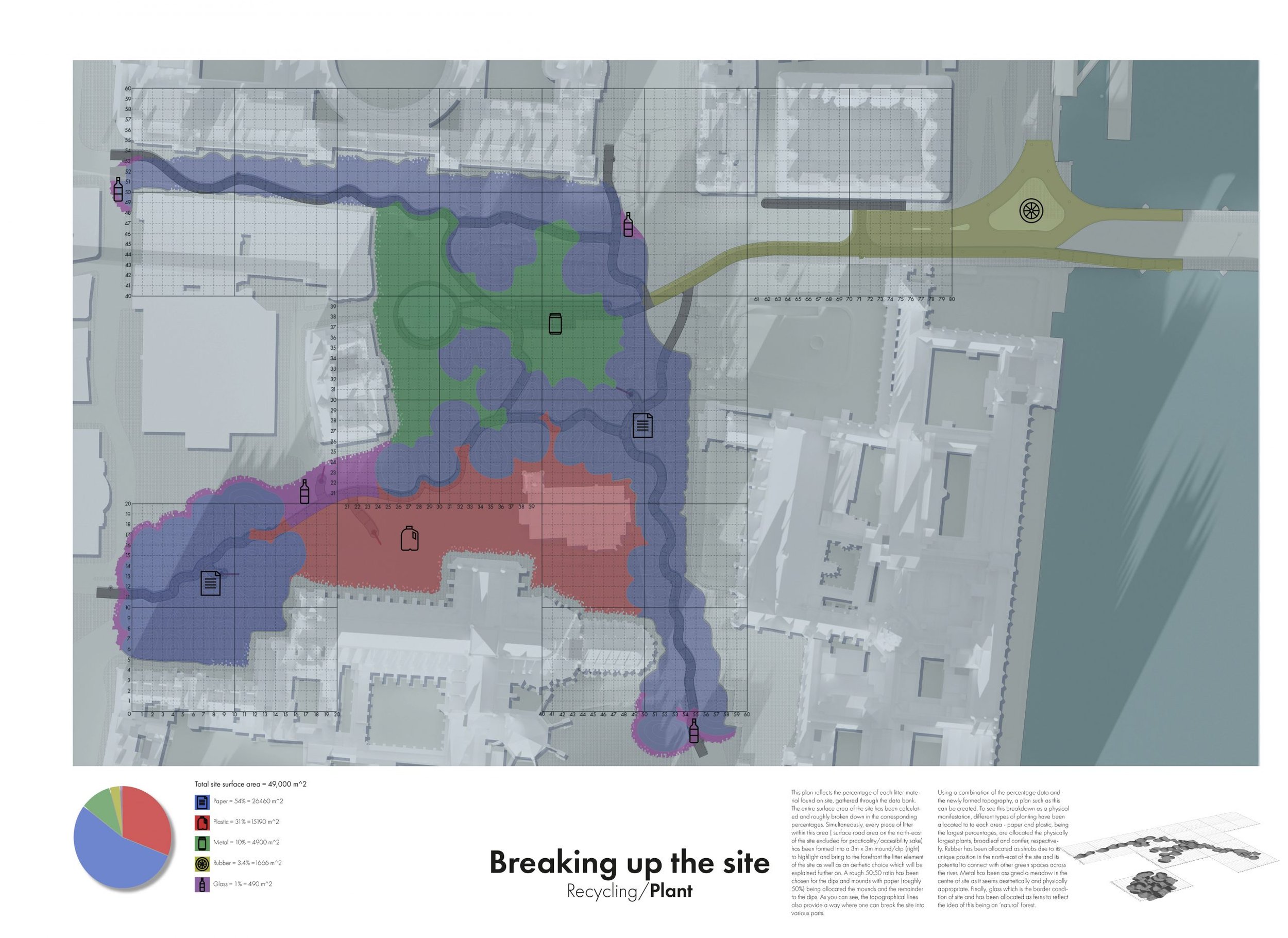the gini index: measuring disruptive ecologies
University of Greenwich, London
Type | BA3 Landscape Architecture & Urbanism
Client | University of Greenwich
Status | 2019 - 2020
Prompt | The Gini Coefficient
The most common method used to measure inequality is known as the Gini coefficient. This is a mathematical measure which looks at income distribution over a whole society, not just between different pre-defined groups. By lining up the whole population from poorest to richest and calculating the percentage of income each person has, this measure can show how far a society is from a perfectly equal one.
This year, the unit developed different methods to measure ecology that integrates levels of urban inequity and environmental crisis. We did this by re-imagining the Gini Index so that a ‘perfect society’ is not only measured by its equality, but includes gradients of ecology - or disruption thereof.
Firstly, this unit defined the notion of urban ecological balance and identified the factors that lead to disruption. This enquiry generated a new index specific to each student that was used to measure their site, interpret its conditions, re-imagine its potential, and design for direct action.
The premise of our unit was to stimulate critical enquiry and data-driven design. We visited Venice to attend this year’s Biennale titled May You Live in Interesting Times, from November 5th to November 7th.
This landscape architecture and urbanism studio had an urban focus exploring how small-scale interventions can have city-wide and regional impacts.
pureland
by Zixiao Xiong
fem-way: place of protest
by Georgia Good
participation
by Rebecca McDonald
recycling
by William Beament














